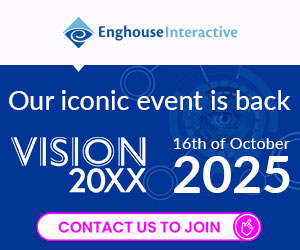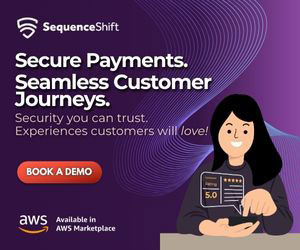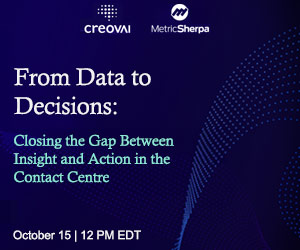Jeremy Payne looks at why businesses need to customise their customer service to satisfy their diverse customer base.
Dealing with digital natives
If your business model is predominantly online or you’re marketing to a young tech-savvy audience – consisting of the so called millennials or Generation Y digital natives – you’ll want to offer social media engagement and a greater array of online communications tools. You’ll need to deploy solutions that allow customers to self-serve at any time, on any device in any place.
Tools like social media posts, self-service user forums, searchable knowledge bases, interactive voice and visual response (IVR) webchat and even artificially intelligent robot agents that can chat through a messaging service are all likely to be part of the mix.
A recent survey we carried out with 2,000 adults across the UK found that, among 16-24-year-olds, the three most popular methods of engaging with a business or a brand were smartphone (cited by 25%); self-service via company website (23%) and social media (18%).
The appearance of social media on this list is not altogether surprising. In our survey, nearly three times the proportion of 16-24-year-olds (46%) as against 55 and overs (16%) claimed that a brand’s ability to engage with them via social media was important to them.
Equally, while just 9% of respondents in the 16-24 age bracket said engaging with a brand using online communications was not important to them at all, that figure rises to 41% among the 55+ category.
The lesson for businesses from the results detailed above is that while they need to have an online strategy in place for Generation Y and millennials, they also need to be aware that there are large numbers of older consumers, particularly those 55 and over, for whom online communications are largely seen as an irrelevance.
Older and younger consumers have different interaction needs
Businesses with customers in this latter category will need to find other modes of communication to engage with them. Once again, the survey results are confirmation of just how different are the interaction needs of older and younger consumers.
Older customers, many from either the Generation X or Baby Boomer ranks, are generally looking for more personalised human-to-human customer service based around one-to-one engagement. Every time they interact with the business, they want to talk to the same person: someone who knows them and understands the nature of their enquiry.
If you are mainly engaging with this kind of customer group you should focus on traditional channels. After all, email is way out in front as an engagement method here, with 52% of the 55 and overs category favouring it, followed in popularity amongst that particular group by fixed-line phone.
If your market is a mixture of both old and young, you’ll need a broad-based solutions offering, encompassing traditional voice-based telephony and the latest online solutions.
Businesses need to broaden their range of communication channels
In order to meet the diverse needs of such a polarised customer base, businesses are likely to need to broaden the range of communication channels they offer and make themselves accessible round the clock (not just in office hours) so their customers can engage with them any time, anywhere and on any device.
But while expanding the breadth of channels offered is clearly important, businesses must never neglect the demands of the connected enterprise, where workers across a business are linked in a collaborative network and can be brought into play to engage with customers where necessary.
The ability to be quickly routed through to somebody within the business who has background information about them and understands their needs is prized by all groups, although perhaps most highly by older consumers, who particularly value having quick and easy access to somebody who knows them and understands their needs.
It’s clear, though, that all groups feel a frustration when they experience a sense of disconnect in the process of engaging with a business.
Being passed round multiple agents, none of which can resolve your problem, is by far the biggest irritation that people experience when engaging with a company providing service, being cited by 43% of respondents to the survey.
It’s a finding that once again highlights the importance of the connected enterprise and more specifically of being able to triage and route customers to the right contact within the business.
The next two highest ranked concerns identified by the survey also relate to the theme of the connected enterprise. Being kept waiting for service or lack of timely response and inability to speak to a live agent were each referenced by 16% of the sample as their most irritating issue when dealing with businesses offering service.
Businesses need to respond proactively to the polarisation in preferences

Jeremy Payne
It’s important to appreciate that all businesses need to build a connected enterprise, not just the more traditional ones. With the ongoing move to digital self-service channels for customer service, which are typically much cheaper to run, many businesses are making savings. There must be a temptation simply to take the money and add it to the bottom line. But no – the savvier amongst them are reinvesting that money to ensure that when people do need to speak to staff directly, they can get connected into the business and access somebody equipped with the relevant knowledge to solve their problem.
Businesses need to have a strategy in place that allows them to respond proactively to the kind of polarisation in customer preferences that this survey shows up so clearly.
After all, if they want to protect and build on their reputation for customer service and use it to build business success, they need to know what interaction approach their customers like and be prepared to provide them with a service that delivers just that.
With thanks to Jeremy Payne at Enghouse Interactive
Author: Megan Jones
Published On: 18th Mar 2015 - Last modified: 14th Jun 2024
Read more about - Archived Content, Enghouse Interactive, Jeremy Payne




























